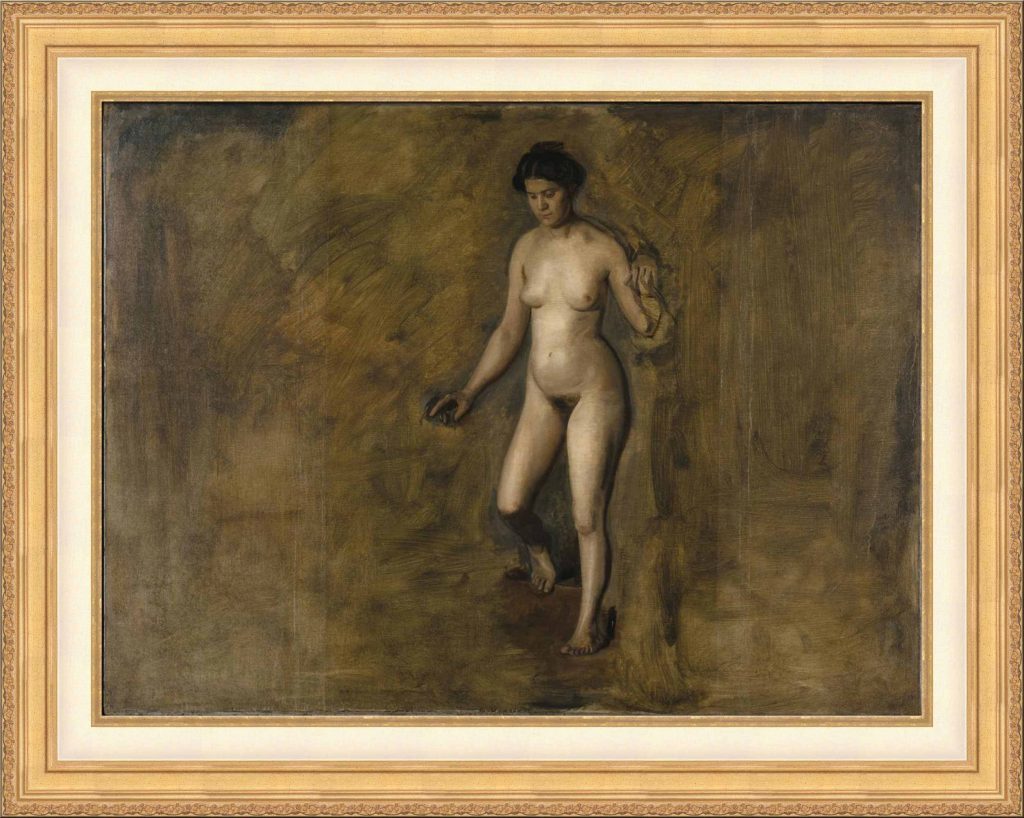
Thomas Eakins William Rush’s Model
Date 1908
Technic: Oil on Canvas
Dimensions: 92,1 x 122,3 cm (36 1/4 x 48 1/8 in)
Location: Smithsonian American Art Museum
Art Movement: Realism
Eakins’s painting commemorates an earlier Philadelphia artist, William Rush (1756-1833), one of America’s first professional sculptors and a pioneer in working from the nude model. In 1809 the Philadelphia City Council commissioned Rush to make a figure for a fountain in honor of the Schuylkill River. Over many years, Eakins memorialized Rush in a number of paintings of the artist’s studio and his sessions working from the model, the moment portrayed here.
The subject held great significance for the painter’s own life. A teacher at the Pennsylvania Academy of the Fine Arts for many years, Eakins ultimately lost his job for persisting in using nude models in his painting classes for women. In the Victorian era, his straightforward representations of the nude figure were considered dangerous to his fe-male students and to society in general. Years after his dismissal, he remained true to his ideas, seen here in the unthinkable liberty he took in showing the model’s pubic hair. Yet Eakins’s steady confrontation with his subject matter has assured his status, along with Winslow Homer, as one of the greatest of all nineteenth-century American painters.
